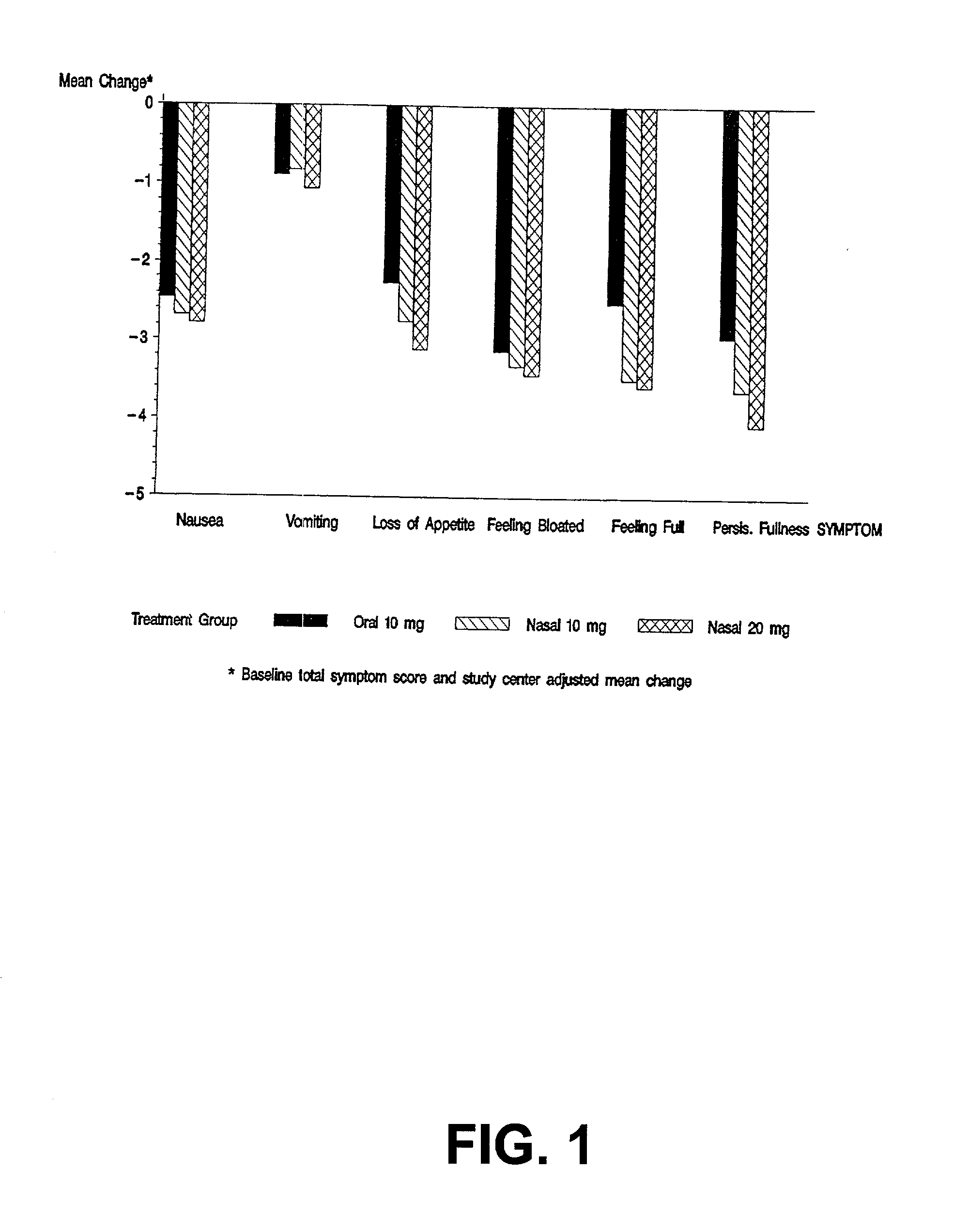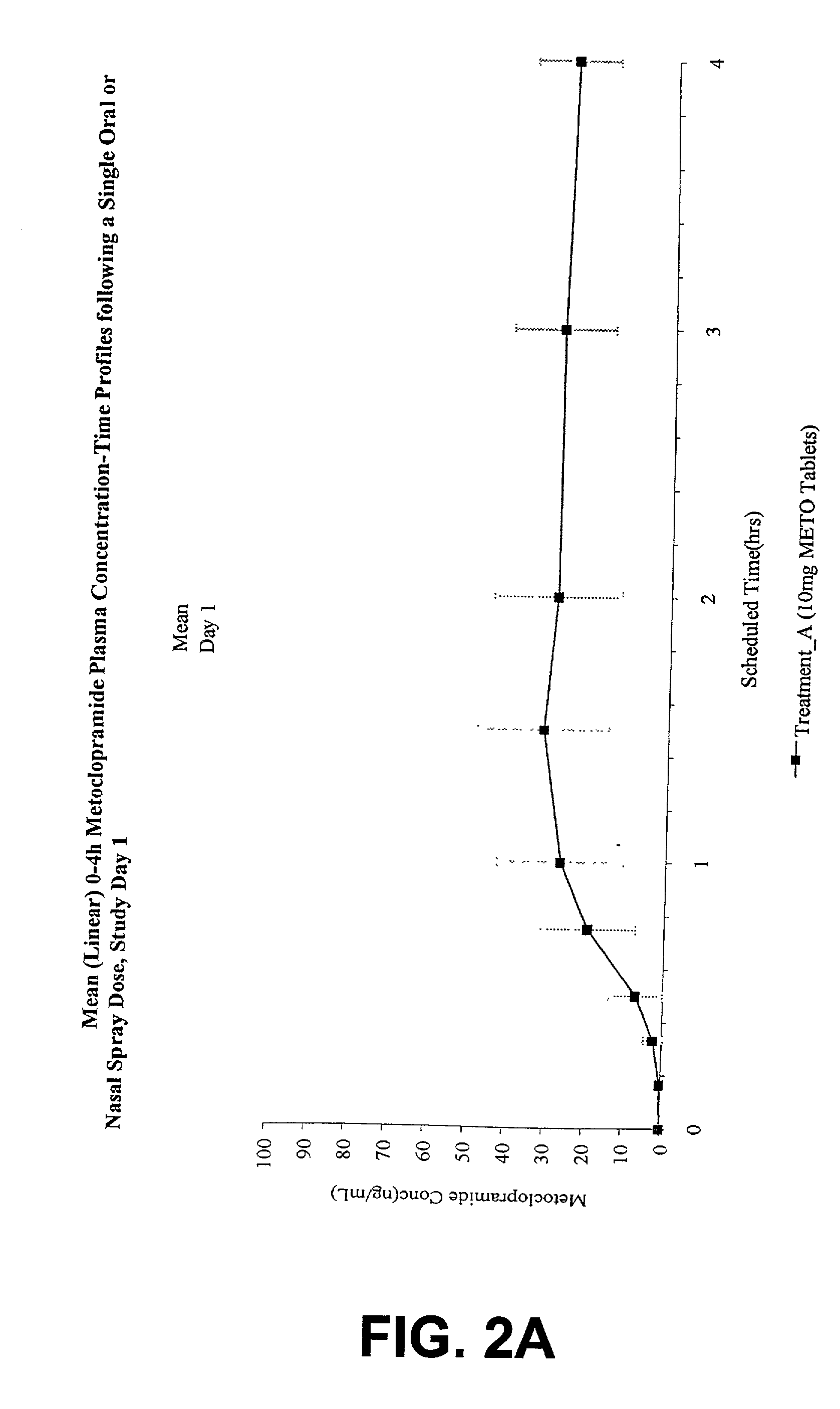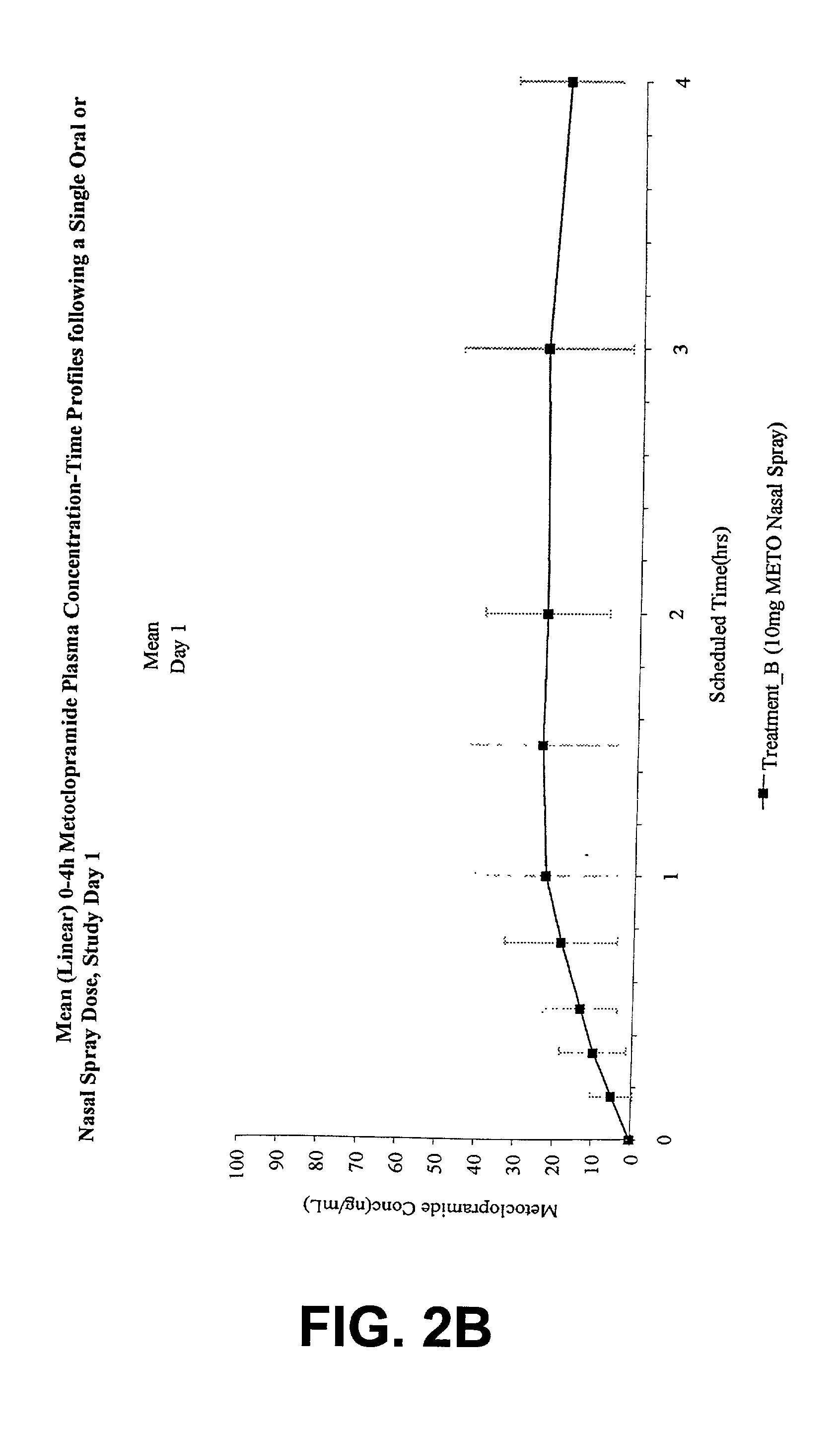Nasal administration of agents for the treatment of gastroparesis
a gastroparesis and agent technology, applied in the field of nasal administration, can solve the problems of affecting the treatment effect of patients, so as to avoid or reduce the incidence of patient non-compliance, avoid or reduce the incidence of side effects experienced by patients
- Summary
- Abstract
- Description
- Claims
- Application Information
AI Technical Summary
Benefits of technology
Problems solved by technology
Method used
Image
Examples
Embodiment Construction
[0031] The invention is directed to a method for treating and controlling gastroparesis by nasally administering MCP or a pharmaceutically acceptable salt thereof. MCP is formulated to contain a therapeutically effective amount of MCP such that upon administration by the intranasal route, a therapeutically effective amount of MCP is delivered to the patient. In addition, the therapeutically effective amount of MCP, in both aqueous and non-aqueous formulations, is chosen to minimize the severity and incidence of untoward side-effects and drug-interactions encountered with MCP. Compared to the injectable form and oral form of MCP, intranasal administration of MCP has the advantage of being painless, effective, safe, and consistent, particularly for patients with gastroparesis.
5.1 Pharmacokinetic Data: Selection of Doses in the Study
[0032] The pharmacokinetic data from three single dose, crossover pharmacokinetic studies in healthy patients vas evaluated to determine appropriate dose s...
PUM
| Property | Measurement | Unit |
|---|---|---|
| concentrations | aaaaa | aaaaa |
| concentrations | aaaaa | aaaaa |
| movement | aaaaa | aaaaa |
Abstract
Description
Claims
Application Information
 Login to View More
Login to View More - R&D
- Intellectual Property
- Life Sciences
- Materials
- Tech Scout
- Unparalleled Data Quality
- Higher Quality Content
- 60% Fewer Hallucinations
Browse by: Latest US Patents, China's latest patents, Technical Efficacy Thesaurus, Application Domain, Technology Topic, Popular Technical Reports.
© 2025 PatSnap. All rights reserved.Legal|Privacy policy|Modern Slavery Act Transparency Statement|Sitemap|About US| Contact US: help@patsnap.com



